Pitch Deck for Investors | 7 Tips and Examples for Startups
Pitch Deck for Investors – There are several theories about what a Pitch Deck must meet for a startup. It has to do with the fact that there are many different types of investors and many kinds of industries.
If you want to learn how to write a business plan and create a pitch deck, sign up for this course of 1,5 hours.
A different type of pitch deck is needed for a fish & chips stall in the city center than for the soft drink factory in the countryside. And asking 100 Dollars from your neighbor is something else than 50 Million Dollars from a professional investor. There are several basic rules to keep in mind.

Table of Contents
Making a Pitch Deck for Investors | Why do you need it?
A Pitch Deck is intended to arouse interest among potential investors. It is, therefore, not a business plan! It is intended to explain briefly and concisely what you are doing and why this can be interesting for an investor. If you are going to make a Pitch Deck for your startup, you must follow the following rules:
- Usually, a Pitch Deck cannot be larger than 7 to 10 clean PowerPoint or KeyNote pages.
- The story must be clear, structured, and well-arranged.
- In less than 5 minutes, the investor must understand and be interested
Below are some Pitch Deck examples and tips:
Making a Pitch Deck for Investors | 7 Tips for Startups
There are several basic rules that you must comply with when you are going to make a Pitch Deck. They apply to every type of business and every type of investor. Here are the most important topics for startups:

1. Start with the “problem” that you experience and the “solution” that you have for this
Try to tell this as short and as powerfully as possible. One sentence says more than 100 words, and with that one sentence, you want to arouse immediate interest. Do not explain how it works, but what you do and why you do this.
An example of this is: Google provides outdated, conflicting, and too much sponsored information. This is why TheONE puts someone with a question in direct contact with someone who has a real and up-to-date answer.
The problem
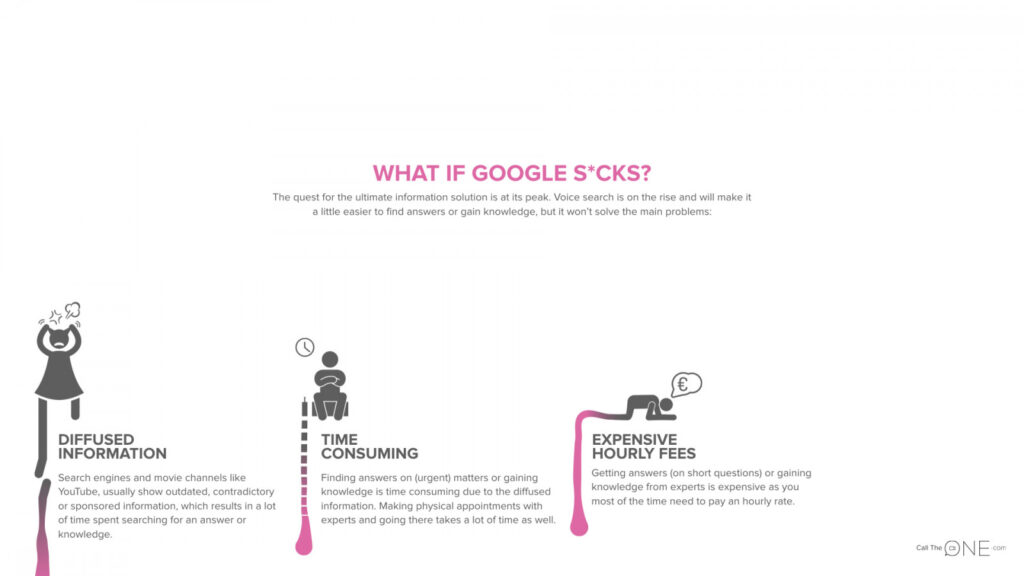
The solution

2. Tell who you are
State why you can offer a solution to the problem like no other. What background and skills do you and your team have?
About us

The team
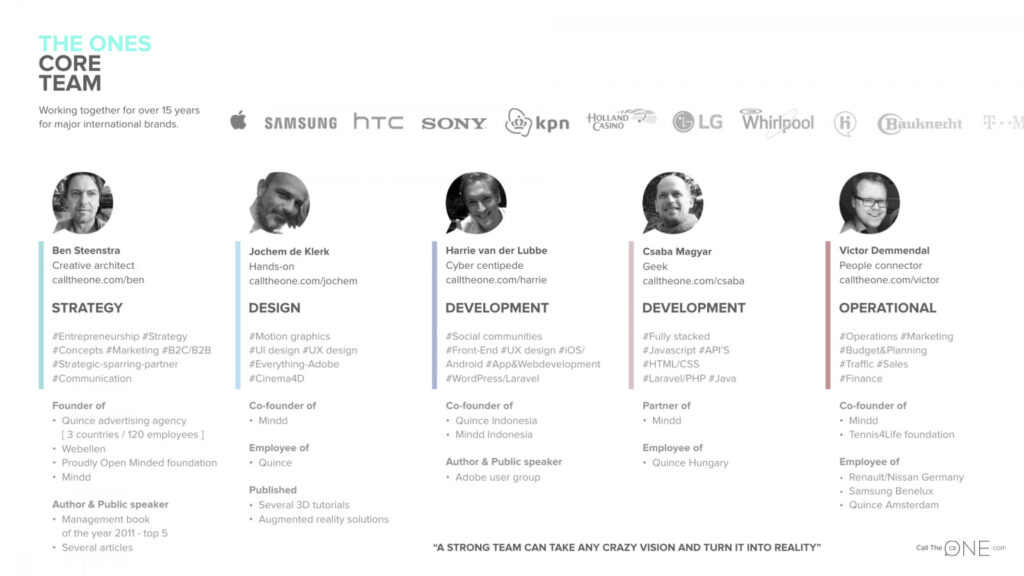
3. What are the characteristics of the solution
Briefly explain how your product or service works. What can or does it all offer and what are the Unique Selling Points?
The unique selling points
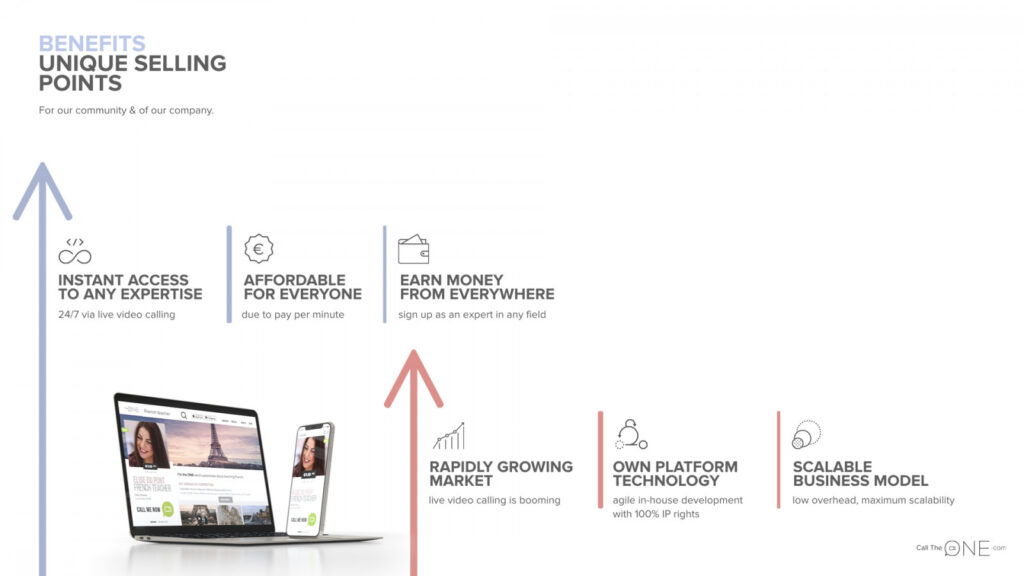
4. What does the market look like
Which players in the market have similar solutions, what do you know about them and what is the evident demand? Make sure you know what your competitive position is.
The market

The competition
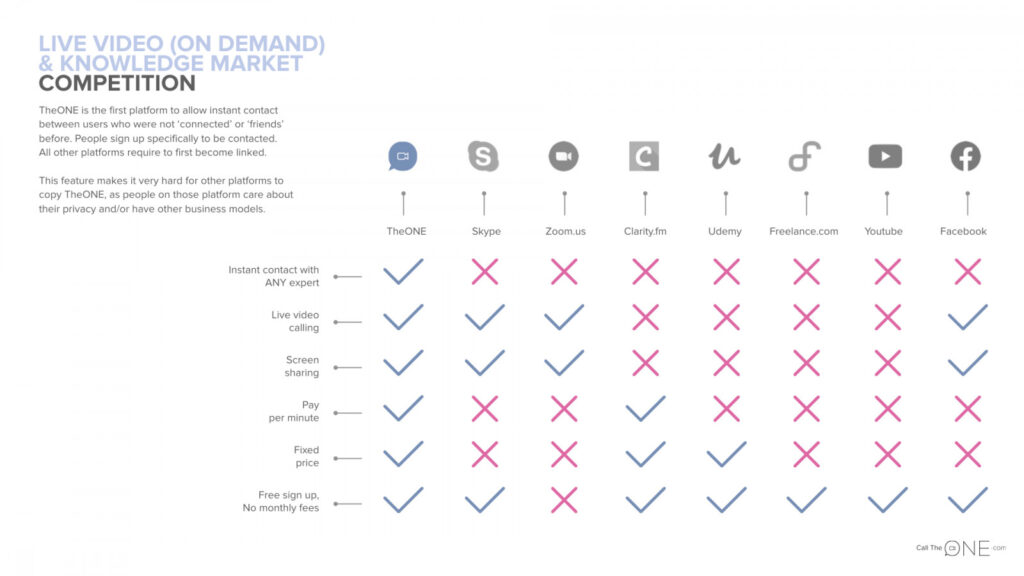
5. How much capital and time is needed before a profit is made
Preferably explain based on an operating budget and cash flow planning why you need what amount and how and when you will make a profit. What are you going to spend the investment on and how do you earn it back?
The current facts

The current status

The market approach
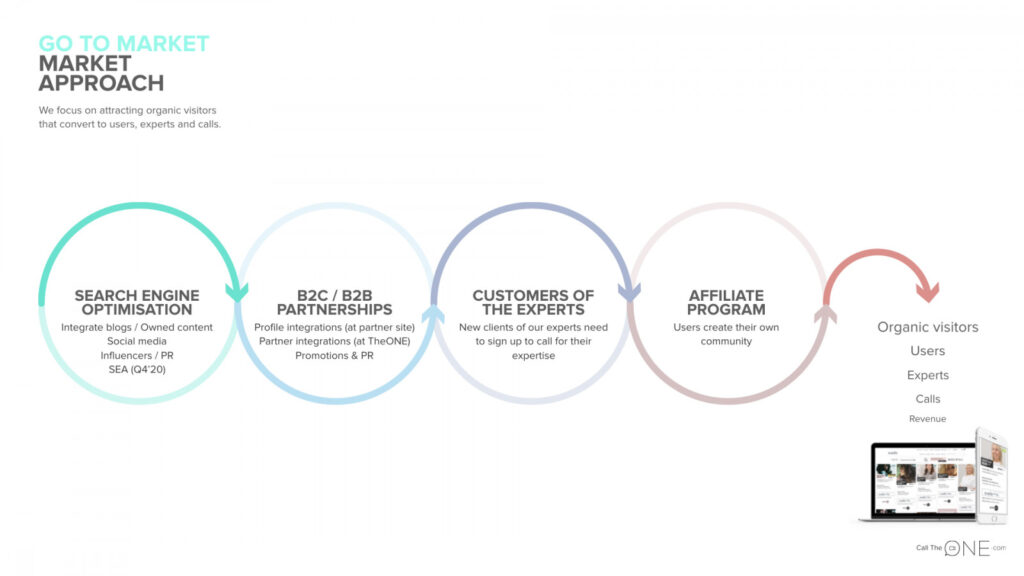
The roadmap

6. Return on Investment
Tell what you ask the investor and what you give in return when. Part of this may include, for example, giving something back to the world through your purpose.
The investment needed
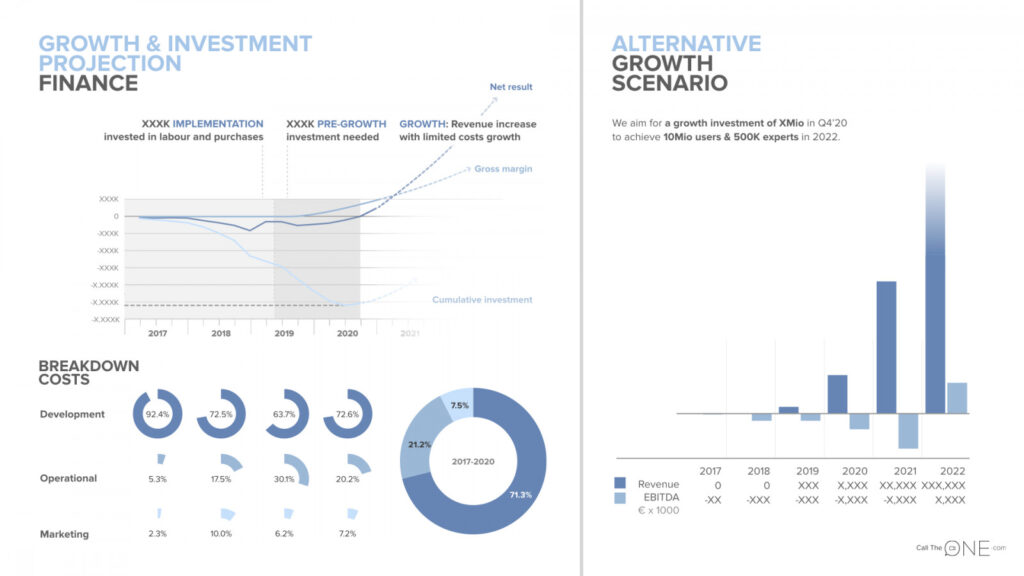
The offer
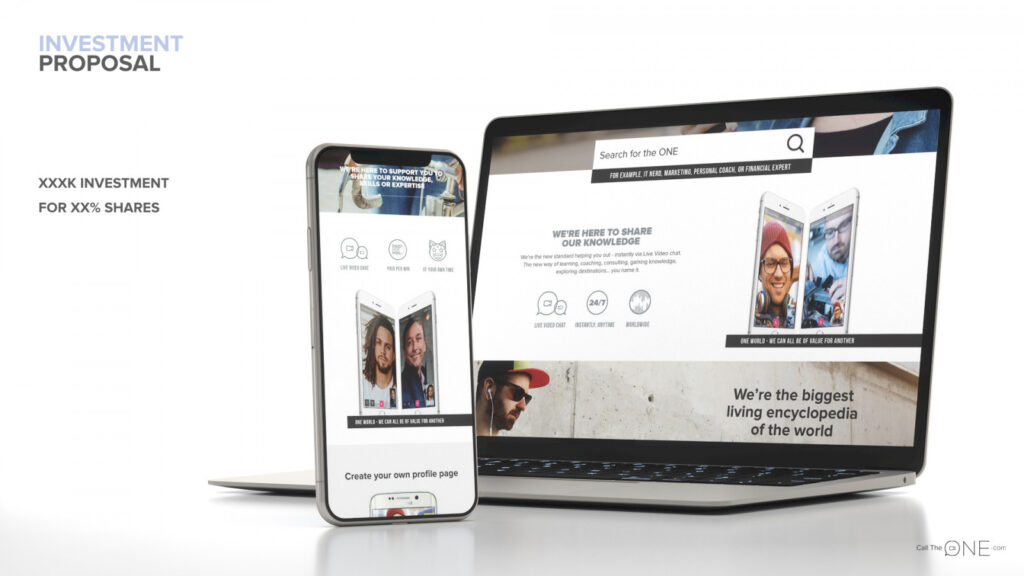
7. Design and layout
Make sure your Pitch Deck looks neat. That reads better and looks more professional and pleasant.
Contact

Making a Pitch Deck for Investors | 7 Pitfalls for Startups
Making a Pitch Deck is not difficult if you know how to prevent the following seven pitfalls.
1. Details
A Pitch Deck is meant for transferring the main lines. Details don’t matter. Make a distinction between what really matters and what are the side issues. It is often the most difficult part because what an outsider finds details can, in your belief, make the difference for you why you have a competitive advantage.
2. Professional Development
You know so much about your subject and are so absorbed in it that you automatically assume that what you think is wonderful and unique. Someone who knows nothing about it will have a different opinion. Because you do not have the time to explain, you do want to prevent this. You also want to prevent jokes that are only used within your industry or field.
NOW FOR SALE AT AMAZON: A DAMN GOOD BUSINESS

3. A lot of professional jargon
The use of professional jargon is out of the question. The investor who does not understand the jargon will not ask for an explanation, and it distracts from the actual message.
4. Too much optimism
The chance that you will be a millionaire in two months is not very likely. Investors understand that. Try to paint a realistic picture of the future and take into account setbacks in your financial budget.
5. Reward yourself before the results
Also, make sure that you do not want to first reward yourself with the money from the investor(s) for previously delivered services without showing results first. The right investors invest in the future, not in costs incurred in the past.
6. Too much humility
Humility as a courtesy is an admirable quality, but if you do not show self-confidence that it will be a success, how should the investor believe this? The same applies to not paying a salary or reward for a very long time. Investors know that you cannot survive without money.
7. Bluffing
Do not tell how great you are and what you have already achieved if not everything is 100% true. That makes you unreliable and a bluffer.
Hopefully, these Pitch Deck examples and tips have helped you. Do you want advice from an investment and Pitch Deck expert? Visit the Mindd Agency , the creator of this site, and the Pitch Deck example. Get all the professional guidance you need.